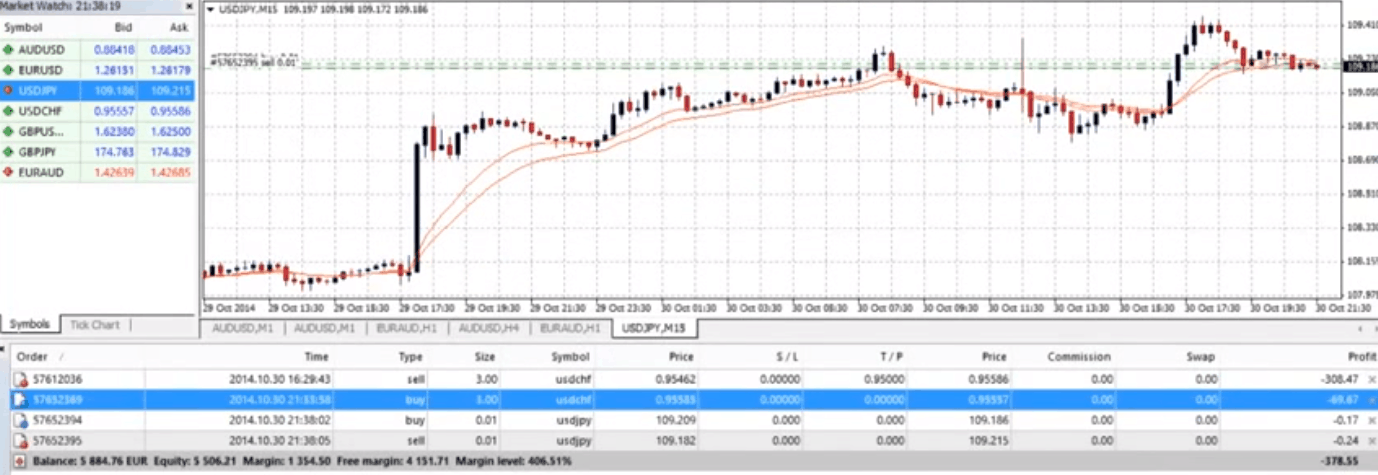Hedging is a technique designed to reduce the exposure to investment risks. In other words, hedging is used to offset the risk of unfavorable price movements. Originally, hedging strategies were used strictly by businesses involved in selling and buying goods. With time, hedging made its way into financial markets.
Why did international trading companies need to hedge their risks? The answer is simple. Suppose, an American company wants to buy goods from an Italian company. To do that, the American company needs to buy Euros with US dollars. As you know, the currency market is prone to fluctuations. By the time the deal is executed, Euro may go up in value, making the deal no longer lucrative for the American company.
To ensure against financial risks, the American company can purchase option contracts. If the Euro is stable and insurance is no longer needed, the American company can simply cancel the options. In this case, the company’s losses would equal to a small premium paid to the seller.
If the fears come true and the Euro grows, the American company will cover its losses with profits from the options. Such transactions fall into the competence of special organizations known as hedge funds.
Hedge funds are high-profile investment institutions that operate on a large scale. Hedge funds don’t work with common Forex traders. Nonetheless, hedging is an indispensable part of a trader’s strategy. When buying a currency pair, it’s only natural that a trader would want to reduce their risks. In this article, we’ll examine the ins and outs of major hedging techniques.
Risk hedging with contracts
To hedge against fluctuations in the market, you can buy different contracts, such as options, forwards or futures. Due to their versatility, options contracts come in very handy when it comes to hedging. What is more, some types of options (covered calls, protective puts) are designed specifically for hedging purposes.
An option is a right, not an obligation to buy or sell a certain asset at a specified price. If things go your way, you can easily cancel your option contract. As mentioned earlier, you’ll lose a premium but it’s well worth it. Before using options for hedging, be sure to gain a good comprehension of different types of options and how they’re used to eliminate risks.
Hedging with locks
Many websites are promoting this hedging strategy as one of the best tools to ensure against risks. At first sight, locking looks like an ideal option. However, if you dig deeper, you’ll see that instead of solving the existing problems, locking creates new ones.

Locks come in three types:
- zero locks,
- positive locks,
- negative locks.
A zero lock is when you open two opposite positions simultaneously (i.e. at the same price) and then close a losing position. Although one of your trades generates losses, you still end up with a profit. Zero lock is commonly used by traders, especially novices.
A positive lock is when you open two consecutive positions in the opposite directions. Suppose, you buy EUR/USD at 1.0700. A price goes up to 1.0780 meaning that your trade is currently profitable. By looking at the chart, you predict a minor retracement. To capitalize on the upcoming retracement, you sell EUR/USD at 1.0780. Now you’ve opened two opposite positions on the same currency pair. This lock is referred to as “positive” because you open a second trade while your first trade is successful.
As you might have guessed, a negative lock refers to a situation when you open a second trade when your first trade is losing. Suppose, you buy EUR/USD at 1.0700. The price starts to go down. When it reaches 1.0680, you open a short position. Out of all three types, a negative lock is the riskiest one. Why? Because if a trend has changed its direction, you’ll have to wait forever until your first trade breaks even, let alone makes a profit.
Keep in mind that locks are only available in MT4. You won’t be able to use locks in MT5 because once you open a short/long position, your prior long/short position is closed automatically. Now you probably understand why brokers are recommending locking to beginners. This is a trick to encourage them to open more trades! Don’t get carried away by locking unless you want to part with your deposit too soon.
Hedging through diversification
Diversifying your trading portfolio can also be viewed as a hedging technique. Instead of relying on just one asset, you’re trading different assets. This way, you can cover your losses from Trade A with profits from Trade B.
Suppose, you go long on EUR/USD and USD/JPY. As the market situation evolves, EUR/USD starts falling, while USD/JPY starts going up. Although one of the trades went south, there is no need to worry because you can offset your losses from EUR/USD with profits from USD/JPY.
You can apply this simple and versatile strategy to different markets and assets. Did you know that buying options is also a way to diversify risks? However, in the previous example, there would be no use to buy both EUR/USD and call option on EUR/USD.
In this article, we’ve covered just a few hedging techniques. If you’re interested in this topic, you can explore other hedging methods. Before applying these techniques in trading, be sure to master them on your demo account. In the hands of an amateur trader, hedging can turn into a dangerous tool that can deplete your trading account instead of protecting it.





